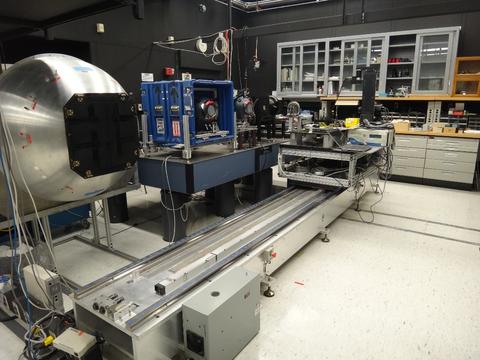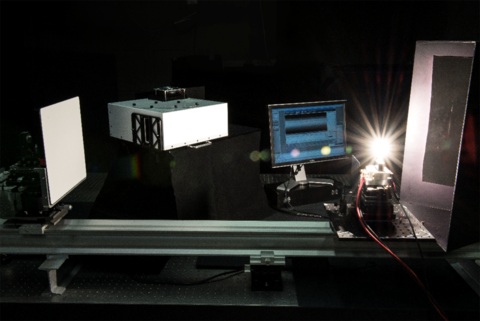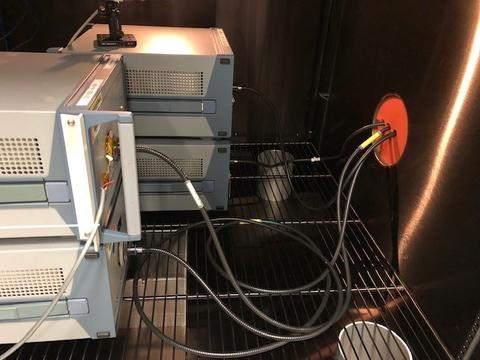Summary
The Remote Sensing Laboratory comprises spectral radiance and irradiance sources, filter and hyperspectral radiometers, and an environmental chamber that are utilized to perform calibrations, characterizations, and intercomparisons.
Description

The Remote Sensing Laboratory (RSL) is designed to address Earth-oriented remote sensing radiometry for the spectral region from the ultraviolet (UV) to the short wave infrared (SWIR), or 250 nm to 2500 nm. For spectral radiance, several lamp-illuminated integrating sphere sources are arranged linearly at fixed positions in front of a set of translation tables that enable computer-controlled alignment of a set of filter and hyperspectral radiometers to each source. The facility is used to calibrate, validate, or characterize test sources using the RSL radiometers, and to perform these same functions on test radiometers using the RSL spectral radiance sources. Some of the RSL sources are calibrated in FASCAL and some of the radiometers are calibrated in SIRCUS, and the RSL is used to validate measurements from these facilities utilizing transfer radiometers. An example activity was the calibration in RSL of a commercial spectroradiometer for establishing the spectral radiance scale of the calibration source for NASA’s Orbiting Carbon Observatory 2 and Orbiting Carbon Observatory 3.

For spectral irradiance as well as spectral radiance via the “lamp/plaque” method, a second bench is configured in the RSL. The radiometric standards are FEL type 1000 W spectral irradiance standard lamps that are calibrated in FASCAL 2. A linear rail system allows positioning of an irradiance radiometer at different distances from the irradiance standard for irradiance calibrations. A diffuse reflectance standard with BRDF values from the NIST ROSI facility is used in conjunction with the FEL to generate spectral radiance values. Many users utilize this lamp/plaque method instead of integrating sphere sources for spectral radiance realizations. An example activity was the calibration of a hyperspectral imaging spectroradiometer designed for studies of solar-induced fluorescence (SIF) in plants.

Radiometric measurements are influenced by the ambient temperature, causing wavelength shifts, changes in system responsivity, or the output of sources. The RSL Environmental Chamber, approximately 1 m3 volume with five access ports, provides for thermal sensitivity characterization. Examples include the thermal sensitivity of custom optical fiber splitters for the Marine Optical BuoY (MOBY) project; the thermal sensitivity of commercial spectroradiometers used in MOBY and lunar irradiance projects from aircraft and mountain observatories (Air-LUSI, Mt. Hopkins, and Mauna Loa); and the development of testing protocols for LED lighting products.

